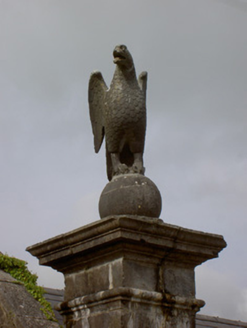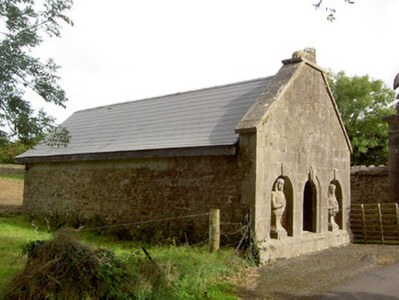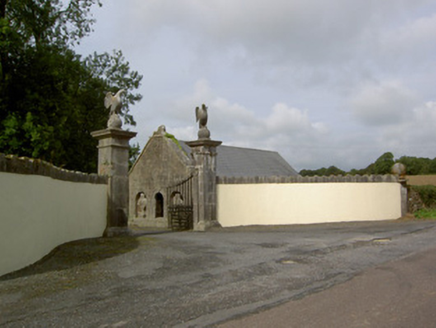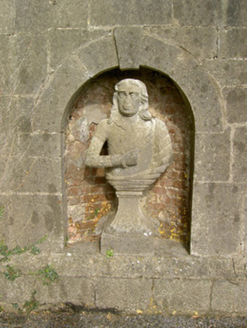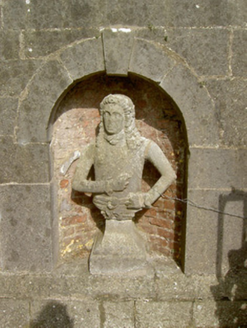Survey Data
Reg No
20900707
Rating
Regional
Categories of Special Interest
Architectural, Artistic, Social
Original Use
Demesne walls/gates/railings
In Use As
Demesne walls/gates/railings
Date
1760 - 1800
Coordinates
150318, 120018
Date Recorded
06/09/2006
Date Updated
--/--/--
Description
Entrance gateway, erected c. 1780, comprising square-plan carved limestone piers with moulded plinths and string courses, scroll motif and moulded caps surmounted by carved limestone eagles perched on ball finials. Rendered curving walls, having castellated cut limestone copings and terminated by cut limestone piers of same height as wall and surmounted by limestone ball finials. Gate lodge and entrance gates sited on road at north-east entrance to Milltown Castle. Detached gable-fronted three-bay single-storey gate lodge, built c. 1780, facing south-east, now disused. Pitched sprocketed artificial slate roof with cut limestone coping to gable-front having carved limestone lion statue to flattened apex. Ashlar limestone façade with projecting plinth. Exposed random rubble limestone walls to sides and rear. Round-headed niches to outer bays having red brick inner surfaces and containing carved limestone busts, flanking round-headed window opening, all with carved limestone surrounds and dropped keystones, triple to window. North-east elevation has round-headed window openings to north-east elevation having red brick voussoirs. Square-headed door opening to north-east elevation.
Appraisal
This is a distinctive and richly ornamented eighteenth-century group of gates and gate lodge are well executed in limestone and survive largely in their original form. The busts to the front façade of the gate lodge are a remarkable and rare example of secular façade statuary in this country. Carved in the same, perhaps somewhat naïve, artisan style as those decorating the façade of the outbuildings on the estate (20900719), the figures here are thought to be William III (an alternative suggestion is Henry VIII) and Oliver Cromwell, those to the outbuildings being George I and II. These statues, together with the lion figure, a traditional emblem of the English monarchy, are probably an expression of the allegiance of the occupant. Milltown Castle demesne has a long history dating from the settlement here of the Fitzgibbon branch of the Fitzgeralds in the late sixteenth century. The house and its associated structures were largely rebuilt in the mid-to late eighteenth century by George Bruce, a member of the influential Charleville banking family. These demesne structures form an interesting group in the landscape and are an important part of the social, historical and architectural heritage of the area.
